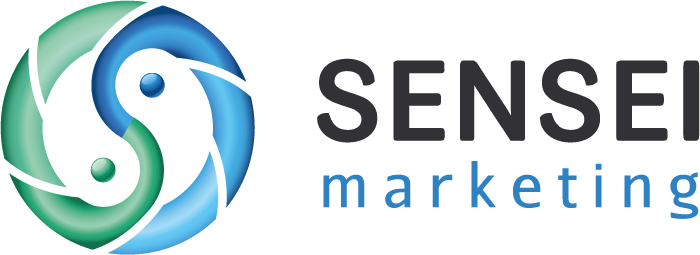We cannot turn on the computer these days without being inundated with “content is king” proclamations by marketers and social media strategists.
Content marketing is touted as THE critical tactic in today’s social media practice for businesses. It’s defined as any type of marketing that involves the creation and public sharing of content in order to acquire customers. The content itself could range from blog posts to social media status updates to videos and memes.
Yes, in other words, it’s marketing. Content marketing has been criticized as a simple attempt to re-brand what marketing has always done: Communicating the value of a product or service to customers in order to attract new customers or re-engage existing customers.
Yet, content marketing has taken on a life of its own. Brand, creative, and social media agencies are now listing it as a key area of expertise and service on their websites. It’s being touted as the linchpin in a social media strategy that can do everything from humanizing your brand to converting more sales opportunities, and from establishing thought-leadership to improving SEO.
Certainly, the concept of developing focused and well-written content that is published among the growing array of digital channels and accredited to your personal or business brand is important.
But here’s the problem with content marketing: Everyone is doing it. Whether they know it or not, whether it’s planned or not.
I’ll argue that there is so much content being produced every day by businesses, media, and the public that whatever effect content marketing might have on a business’ brand is nullified.
Everyone – and everything – is a news-maker and a content producer today through websites, whitepapers, long- and short-form blog posts, micro-blogging, social updates, and videos. Thelist goes on and on.
Dozens of books and tens of thousands of blog posts have been written to provide us with a blueprint for effective content marketing that includes the frequency of posting, the tone of voice to be used, and how to make content entertaining and newsworthy. We’ve been educated on responsive design and how content must be device-agnostic.
Yet, even with all those factoids in mind, I’m left with a question: When everyone is focused on content marketing, and we’ve produced more content than any human can consume, is there still value in dedicating specific resources to it? Does anyone really read all this content? Or are consumers just skimming it, if that? Is there a measurable effect on sales?
Why Do We Produce Content?
It’s widely understood that a content marketing strategy is designed to – among other things – improve SEO, create social proof around a brand, and/or establish the brand’s thought-leadership in a particular industry.
Is that the reason we’ve become so fixated on this marketing tactic? I’d say that these are functional goals, goals that various departments in an organization use as benchmarks of success. But what’s the end goal for the entire organization? Are we not just adding more noise to an already insanely loud echo-chamber?
I’ve often argued that the end-goal of any business is to generate profitable revenue, to earn more doing business than the cost of running that business. How does content marketing serve that end goal? As with anything related to social media marketing, the actual practice should be a cross-silo collaboration, not a standalone tactic.
Keeping Up With The Joneses
If for no other reason, businesses cannot stop producing content because the public and the media will not stop producing it. And consumers will not stop asking for it.
At a minimum, businesses must continue to develop content to counter any negative or inaccurate information produced by consumers, media or competitors.
If content is not going to be produced directly, they must curate the content produced by third parties to establish the same effect.
So we’ve come full circle. Businesses cannot stop producing content, yet they’re feeding a never-ending cycle of noise that’s difficult to measure. What’s the solution?
For businesses, the answer lies in asking the question: What do our customers want? Or, what do our customers need to make better purchase decisions? In particular, the business must consider what content will drive those purchase decisions in its favor, maintain customer loyalty, and grow advocacy.
Content must be looked upon as a by-product of superior customer experience, the end point of a journey, not the starting point.
The reason current content marketing strategies and budgets are still widely debated by executives is their focus on content creation instead of the creation of superior customer experiences.
Be it business- or consumer-produced, content generated in planning and delivering a superior customer experience or that produced by consumers who’ve experienced it, will resonate more with the target audience.
To “cut through the clutter” that is digital media today, emotional connections must be made. Knowing the right tone, structure, and frequency – or other best practices that many marketers blog about – is merely technical knowledge.
That knowledge may possibly help you write better content, but it won’t produce the results a business needs and demands. Results (an effect on the business’ bottom line) are generated when great content is the by-product of great customer experiences. That is the magic ingredient that will resonate with the audience and encourage action beyond the act of reading.
| Content | Planned Content(proactively produced by business operations) | Generated Content(reactively generated by business or consumers) |
| Training Videos | What the product is, how it works, features & benefits. | How using the product saves the consumer time, money, or productivity. |
| Customer Testimonials | Professionally produced by the businesses and shared on the site. | Voluntarily written or recorded by consumers and shared by them on their channels or industry sites. |
| White Papers | Industry best practices and how the business’ product supports it. | Crowdsourced best practices written by customers. |
| Blogs Posts | Written by industry leaders or paid influencers, sharing their “thought leadership.” | Written by front-line staff and customers, sharing their experiences. |
This is not to suggest that both types of content should not co-exist in the marketplace. I’m challenging content producers and social media marketers to reconsider what type of content is most effective and driving measurable results for the business.
Sensei Debates: Is there really such a thing as “content marketing” or it just marketing? If so, do you agree or disagree that there’s a difference in the type of content being produced? Is one better than the other? What’s the right mix?
Sam Fiorella
Feed Your Community, Not Your Ego
Image Credit: Orange.man via Creative Commons







